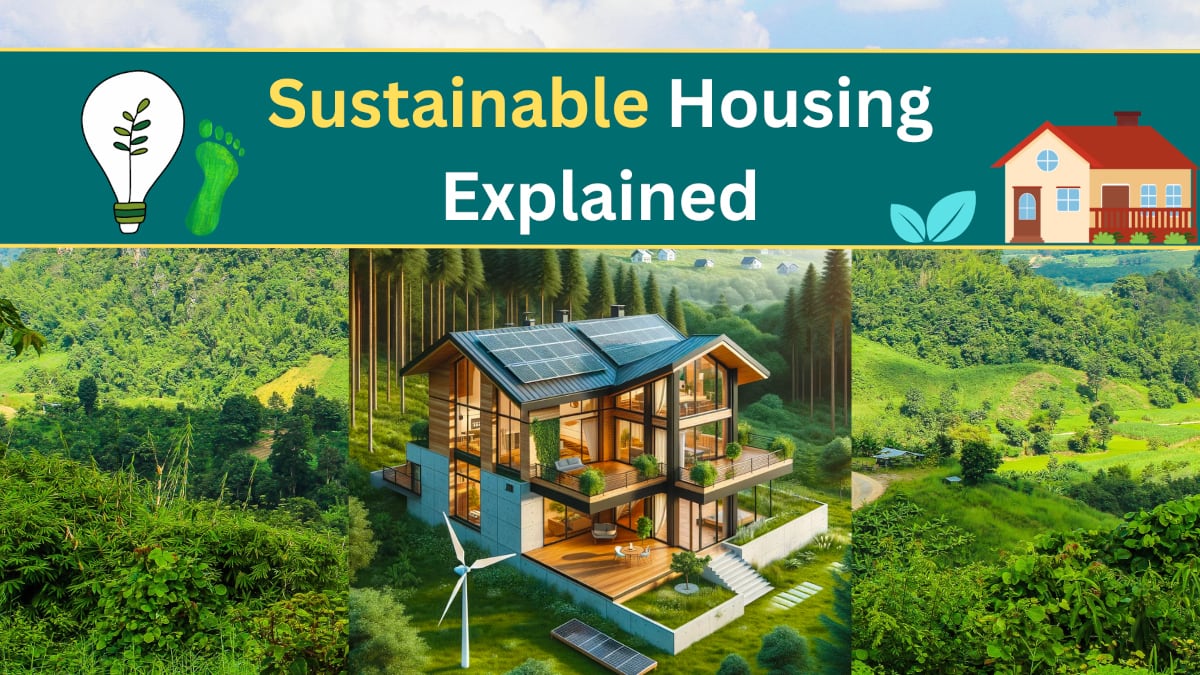Sustainable housing has become an increasingly popular topic as more people look for ways to reduce their environmental impact. But what exactly is sustainable housing, and what are the best options available today?
As an engineer and entrepreneur passionate about green technology, I’ve explored this topic with deep interest. In this comprehensive guide, I’ll provide an overview of sustainable housing, its benefits, and the most promising eco-friendly designs.
Sustainable housing refers to homes designed to minimize environmental damage through energy efficiency, renewable materials, water conservation, and other green features that reduce carbon footprints.
What Is Sustainable Housing?
Sustainable housing is residential construction that adheres to green building principles. The goal is to reduce the environmental impact caused by traditional homes and create eco-friendly living spaces. This involves:
Energy Efficiency
One of the cornerstone principles of sustainable housing is energy efficiency. By optimizing the way homes use energy, we can significantly reduce their carbon footprint and monthly utility costs.
This involves incorporating proper insulation, which acts as a barrier to heat loss and gain, especially in walls, ceilings, and floors. High-efficiency appliances not only consume less power but also offer superior performance.
Additionally, the use of smart building technologies like thermostats allows homeowners to have better control over their heating and cooling systems, adjusting temperatures as needed and ensuring energy isn’t wasted when no one is home.
Renewable Energy
Shifting away from fossil fuels and harnessing the power of renewable energy sources is paramount in creating a sustainable home. Solar panels, which convert sunlight into electricity, are becoming more efficient and affordable, making them a popular choice for homeowners.
Geothermal heating takes advantage of the stable temperatures beneath the Earth’s surface, providing both heating in the winter and cooling in the summer.
Integrating these and other renewable energy systems can significantly reduce a household’s reliance on traditional energy sources, decreasing its environmental impact.
Sustainable Materials
Choosing the right building materials like sustainable concrete is essential for sustainable construction. By selecting recycled, renewable, or locally-sourced materials, homeowners can reduce the environmental impact associated with the extraction, transport, and processing of raw resources.
For instance, bamboo is a rapidly renewable resource that can serve as an alternative to hardwood. Recycled steel, reclaimed wood, and straw bales are other materials that can be incorporated to minimize carbon footprints.
Furthermore, using materials with low embodied energy, which refers to the energy consumed during their entire lifecycle, contributes to a more sustainable construction process.
Water Conservation
Water is a precious resource, and sustainable housing focuses on its conscientious use. Installing low-flow plumbing fixtures like toilets, faucets, and showerheads can drastically reduce water consumption without compromising on functionality.
Rainwater collection systems capture and store rainwater, which can then be used for non-potable purposes like irrigation or toilet flushing.
Additionally, choosing drought-tolerant landscaping plants and native species can further diminish the need for excessive watering and promote local biodiversity.
Indoor Air Quality
A sustainable home is also a healthy one. Prioritizing indoor air quality ensures that occupants are breathing clean, pollutant-free air.
The use of low-VOC (Volatile Organic Compounds) paints and finishes reduces the amount of harmful chemicals released into the air, which can have detrimental health effects over time.
Proper ventilation systems, such as those with heat recovery, bring fresh air into the home while simultaneously conserving energy. Combining these features with houseplants that purify air can further enhance indoor air quality.
Waste Reduction
Minimizing waste is a vital aspect of sustainable housing. This involves designing homes that are durable, adaptable, and made with material conservation in mind.
Prefabricated components, for example, are manufactured in controlled environments, which leads to higher precision and less waste.
Designing spaces that can be easily modified or repurposed over time ensures the longevity of a home and reduces the need for future resource-intensive renovations.
Additionally, by implementing proper waste segregation and recycling practices during the construction phase, we can ensure that materials are reused or recycled to the fullest extent possible.
The ultimate goal is to create net zero or carbon-neutral homes that produce as much renewable energy as they consume. Let’s explore the main benefits this provides.
Types of Sustainable Housing
Many different architectural styles and engineering solutions fall under the green building umbrella. Though no single design works perfectly in all situations, I’ve highlighted some of the most popular eco-friendly homes gaining traction worldwide.
1. Passive Solar Homes

Passive solar takes advantage of the sun’s energy through carefully planned designs. Large south-facing windows, thermal mass walls, and open floor plans maximize solar gain in colder months. Overhangs, insulation, and shading limit heat absorption in summer.
When combined with high-efficiency building envelopes, passive solar homes can reduce energy consumption by up to 90%.
2. Net Zero Energy Homes
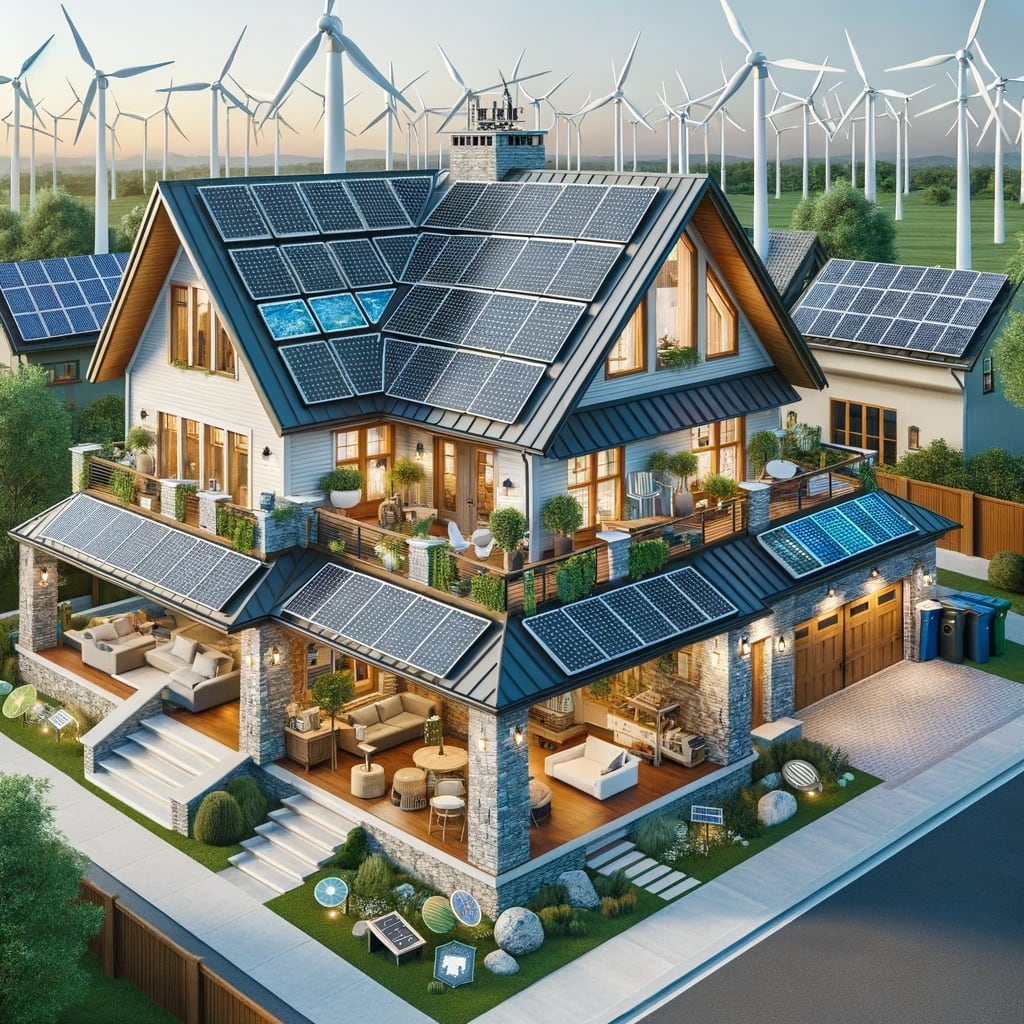
As the name implies, net zero energy (NZE) homes produce as much power as they consume annually. They achieve this using a combination of energy efficiency, renewable energy, and sometimes battery storage. NZE homes represent a viable path to zero carbon emission dwellings.
3. Modular Prefab Homes
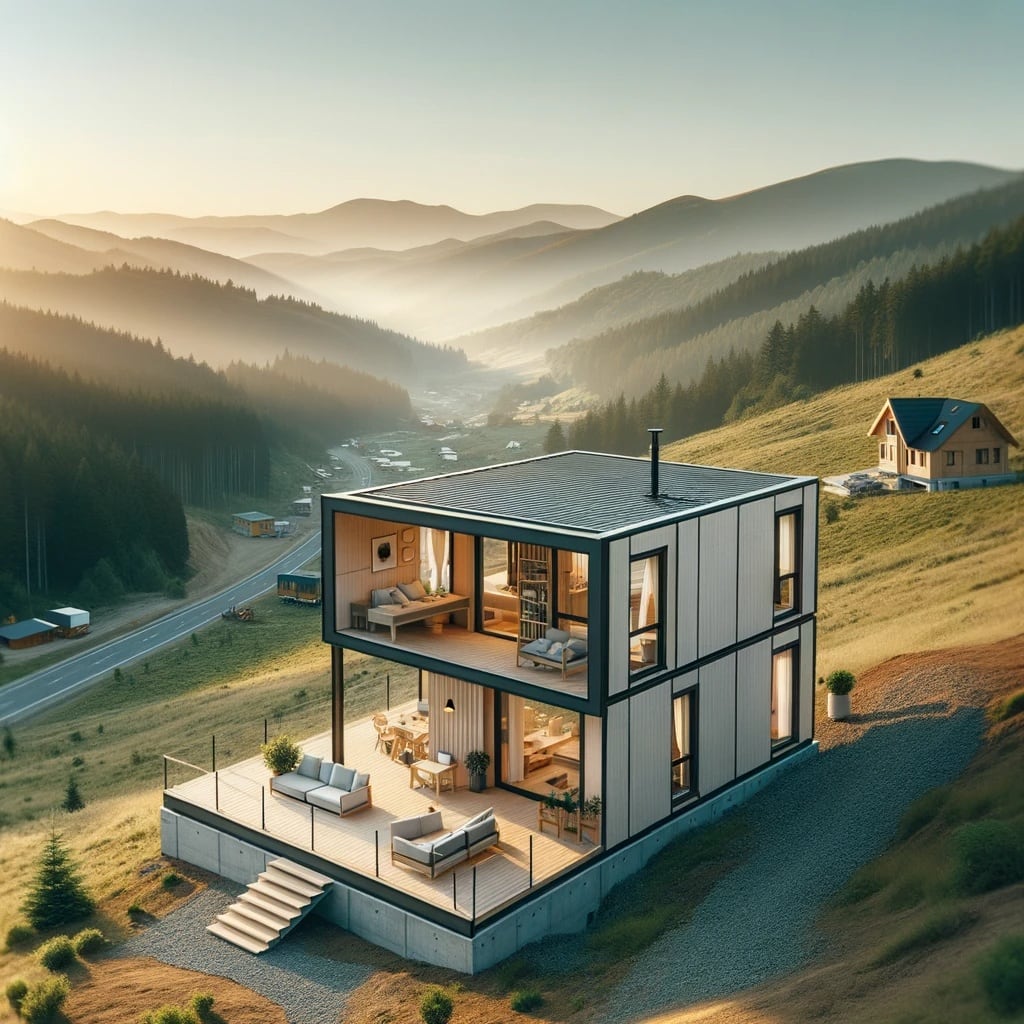
Prefabricated homes are factory-built using modular components. This controlled process cuts waste and allows quality assurance oversight.
Prefab homes are then delivered to the site for rapid construction, reducing on-site energy use and material costs. Their quality and efficiency make them a green option.
4. Earth Sheltered Homes
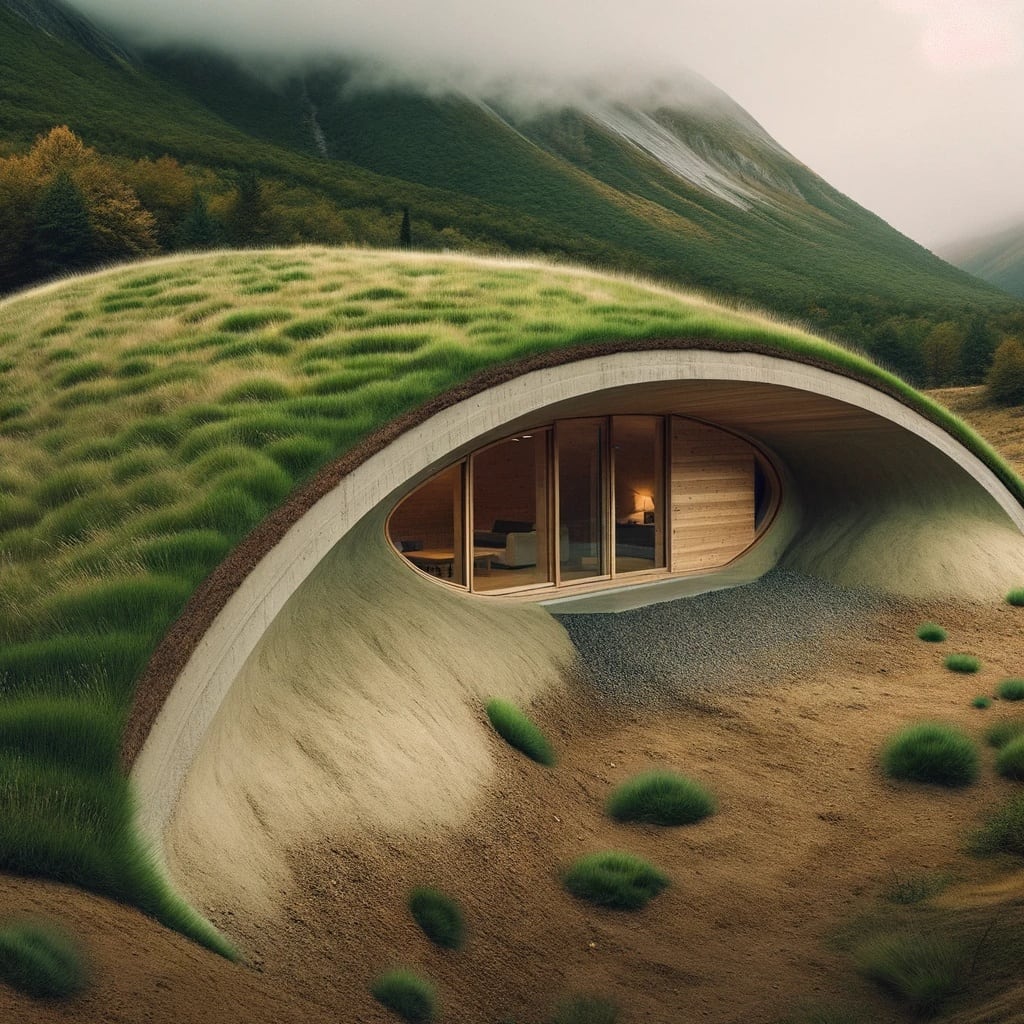
By covering the structure on at least three sides with earth, underground homes leverage the insulating properties of soil. Berming reduces temperature extremes, cutting HVAC energy usage by up to 70%.
Underground homes also conserve building materials by utilizing the surrounding earth as much as possible.
5. Straw Bale Construction

Straw bale building uses compressed straw modules as structural insulated panels for walls. This agricultural waste product creates walls with very high insulation values to reduce energy demands. Straw bale construction also sequesters carbon in the bales while diverting them from landfills.
6. Hempcrete Homes
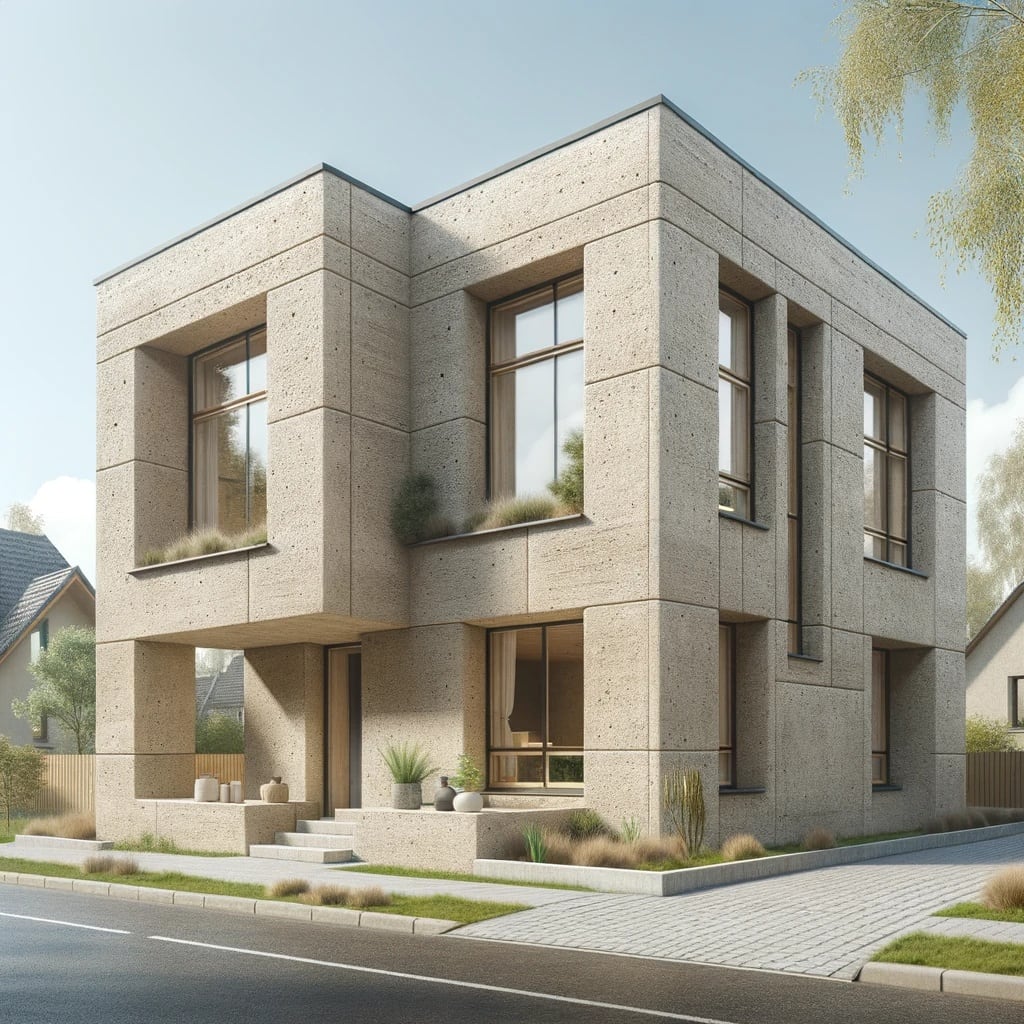
Hempcrete is a biocomposite material blending hemp hurds and lime. It offers good insulation, breathability, and thermal mass for energy efficiency. Hemp plants absorb carbon as they grow, offsetting the lime binder emissions. Hempcrete is lightweight, renewable, and recyclable.
7. Rammed Earth Homes

Rammed earth constructs walls by compacting damp subsoil into forms. This creates durable monolithic structures with natural thermal mass. Stabilizing the soil with lime or cement adds strength. Rammed earth provides a local, low-carbon building material in many regions.
8. Earthships

Earthships are entirely off-grid homes built from recycled materials like used tires and cans. They collect rainwater, harness solar and wind power, and recycle greywater through indoor plant beds. While unconventional, Earthships provide sustainable housing with small eco-footprints.
Of course, there are many other green housing technologies beyond these examples. Sustainability constantly evolves as researchers and builders push innovation further.
Benefits of Sustainable Housing
Constructing green homes offers numerous advantages both for residents and the planet. Here are some of the top reasons to consider sustainable housing:
1. Lower Utility Bills
Green homes are designed for maximum energy efficiency. Features like airtight construction, high-performance windows, and energy-saving appliances substantially reduce monthly utility bills. Smart thermostats and solar panels provide additional savings. Who wouldn’t want to slash their power and heating expenses?
2. Improved Comfort & Air Quality
Sealing air leaks and using insulation creates consistent temperatures inside sustainable homes. Balanced ventilation keeps the air fresh and prevents moisture issues. Non-toxic finishes keep indoor air clean as well. The result is a comfortable environment free from drafts, humidity, and pollutants.
3. Reduced Environmental Impact
Eco-friendly homes minimize the depletion of natural resources in many ways:
- Energy efficiency reduces fossil fuel consumption for power generation.
- Renewable energy, like solar and wind, eliminates greenhouse gas emissions.
- Sustainable materials conserve forests, minerals, and other limited resources.
- Water conservation preserves local water supplies and ecosystems.
By reducing carbon footprints, sustainable housing helps mitigate climate change effects on both local and global scales.
4. Lower Maintenance
Quality green building practices and materials – like durable metal roofing, composite decking, and mold-resistant drywall – stand the test of time with less upkeep. Mechanical systems also operate more efficiently, extending their lifespans. Fewer repairs mean more money and time saved.
5. Future-Proof Investments
Green features boost home values and make sustainable houses attractive in the real estate market. Energy upgrades like solar panels not only increase home values can also qualify properties for financing programs and incentives. Overall, eco-friendly homes provide better returns on investment.
Expanding Sustainable Housing
Despite the many benefits, green homes still represent a small fraction of new construction. Transitioning to widespread sustainable housing will require addressing several challenges:
1. High Upfront Costs
Sustainable materials, systems, and specialized design often increase initial construction costs by 10-20%. However, the investment pays back over time through lower utility and maintenance costs. Government incentives also help offset premiums to make green homes affordable.
2. Lack of Knowledge
Most people lack awareness regarding sustainable construction benefits and options. Better education and promotion of proven technologies will build public interest. Demonstration projects provide tangible examples of successful eco-homes as well.
3. Industry Resistance
Transitioning to green building practices requires changes that some companies resist. However, training programs and government mandates are compelling the industry to adapt. Supportive policies and lead-by-example public projects will accelerate the shift.
Permitting Obstacles
Building codes and zoning laws sometimes restrict sustainable approaches like rainwater harvesting, composting toilets, or off-grid systems. Updating laws and allowing exemptions will remove barriers to innovation.
While challenges remain, education, incentives, updated policies, and new technologies are steadily enabling widespread sustainable housing.
Conclusion
As eco-consciousness grows globally, sustainable housing offers a promising route to reduce humanity’s carbon footprint. Intelligent green building designs and renewable energy systems allow homes to minimize their environmental impacts.
Though adoption faces obstacles, sustainable housing provides living spaces that are comfortable, healthy, affordable, and gentle on the planet.
With strong potential benefits for people and ecosystems alike, sustainable housing deserves consideration both for new construction and upgrading existing homes.
My hope is that this overview has illuminated some of the most exciting technologies and opportunities in this growing field. Please share any experiences, thoughts, or questions you may have regarding sustainable homes and how we can expand their adoption worldwide.

